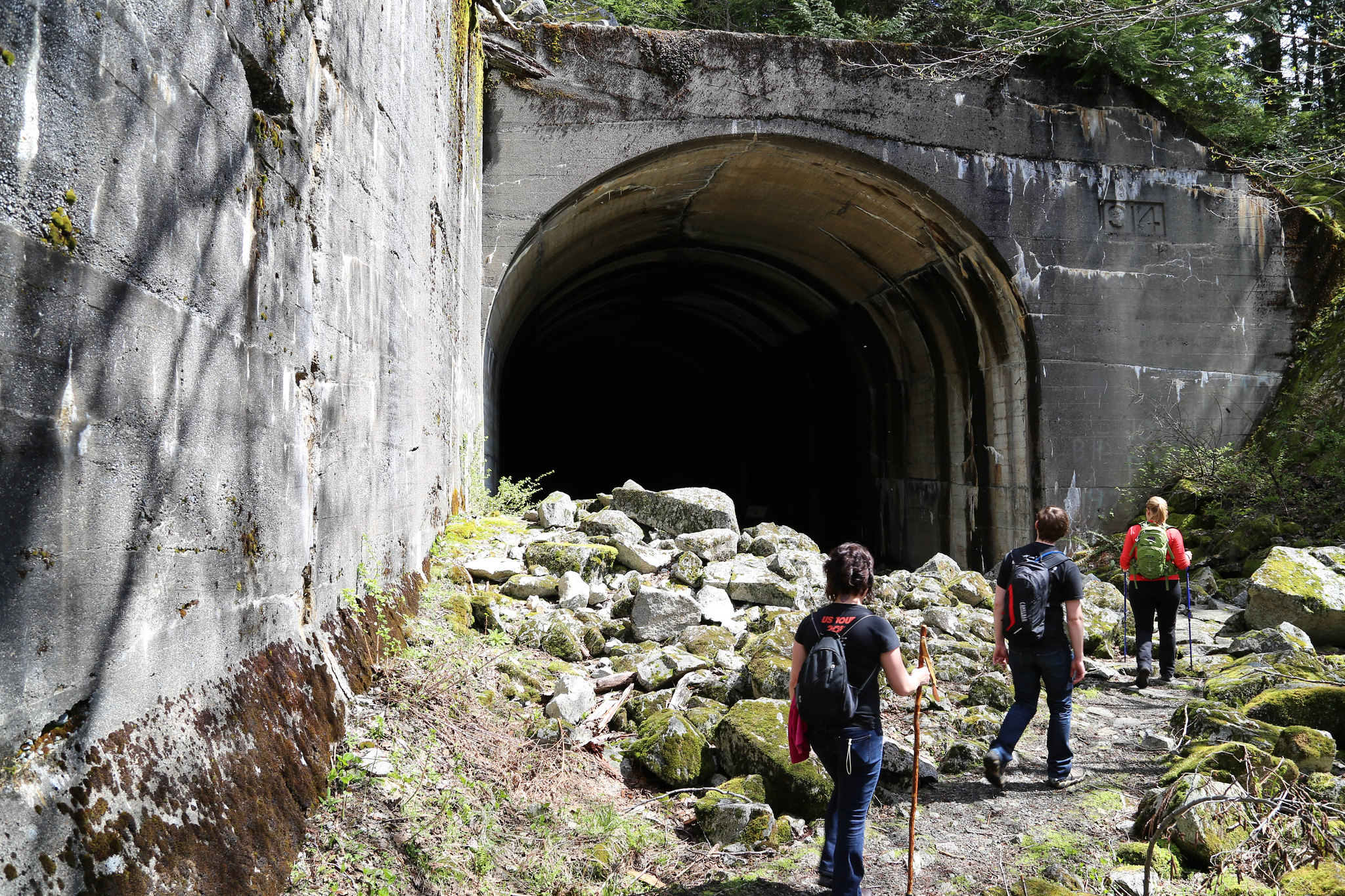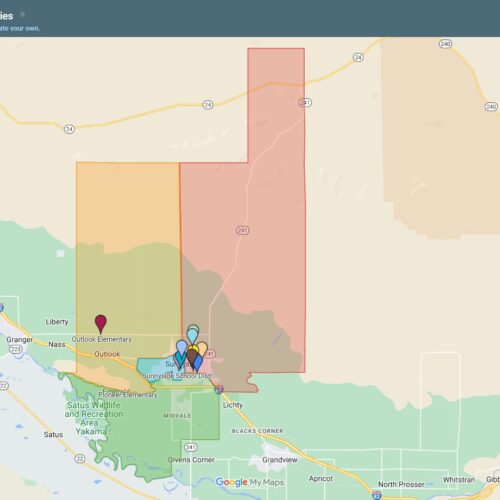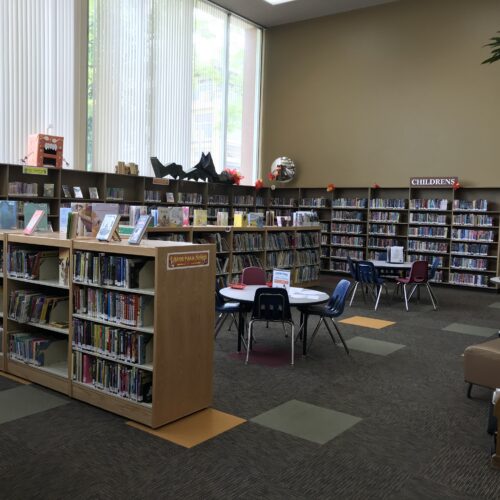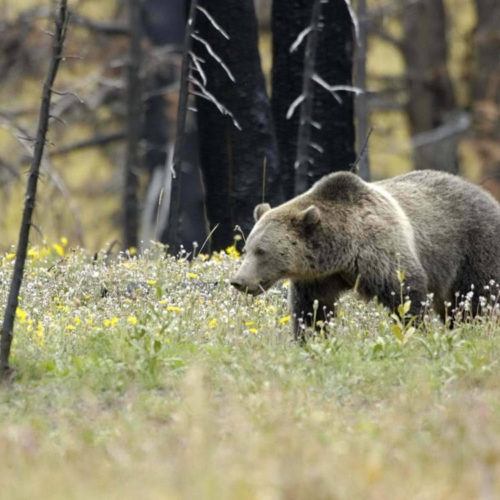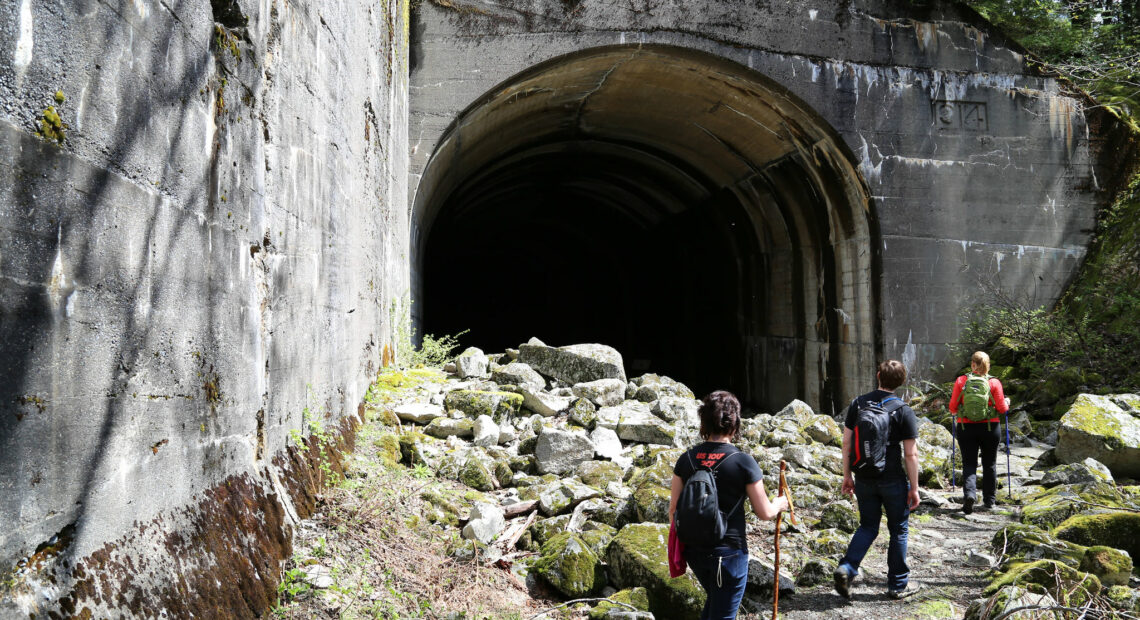
A ‘haunted hike’ brings Washington disaster to life
Listen
(Runtime 3:37)
Read
The Cascade Mountains are full of stories. Some harrowing, some tragic. This story has a bit of both.
The Iron Goat Trail winds along the Great Northern Railway grade and remnants of the original Cascade Tunnel, just off Highway 2 on Stevens Pass.
“So this hike is at around 2,400 feet elevation. It’s good for a rainy-day hike, but I would keep an eye on the snow levels. And if they drop down to around 2,000 or 2,500 feet, it’s going to be snowy in here,” Jennifer Lupine explains in a YouTube video.
The area certainly sees its share of snow, which was how tragedy struck in 1910.
Along the trail, people have reportedly experienced hands grabbing at them and heard screams or whispered voices. Medium Jill Dell posted a YouTube video after a recent hike. In the video, she’s standing near a tunnel.
“There’s definitely a lot of water. They say that it’s closed down because of flash flooding,” she says. “And this is where my equipment malfunctioned.”
So, she came back later and talked to what she called, “entities or people” in the tunnel:
“So that I can share your story,” she recorded herself saying.
Then, she said, a “disembodied voice” told her to “piss off.”
But, author Gary Krist doesn’t believe all the ghost stories. He literally wrote the book about the 1910 avalanche that struck the area, killing 96 people.
“It’s hard to forget that so many people died there,” Krist said.
As he put it, this disaster added up to the “decimation of an entire community.”
This hiking trail was just wrapping up as Krist finished his book “The White Cascade.” It’s a sweeping novel, full of first-hand accounts about the events leading up to the disaster and its aftermath.
In 1910, a snow storm unlike any seen in years trapped a passenger train and a mail train at the tiny town of Wellington — built by and for the railroad.
“It’s up in the middle of nowhere. There wouldn’t be a town there if it hadn’t been for the railroad,” he said.
On the mountainside, avalanches of Cascade cement — snow — further trapped those stuck in the train. After days of holding against one onslaught after the next, their luck ran out. A bolt of lightning sent snow cascading toward the town.
The wave of snow blasted through town, later described by a survivor as: “white death moving down the mountainside.” The force tumbled the trains down the slope.
“You can find old pieces of twisted metal from the two trains that fell over into the ravine,” Krist said.
Rescuers scrambled, digging out 23 people. Nearly two-thirds of the people who died were rail workers.
“The lesson is that you can make all the right decisions in an emergency situation and yet still not avoid tragedy. There was a lot of second-guessing by the media and other people after the tragedy,” he said.
Another lesson, he said, is that technology is simply amazing. The railroad, he said, was crucial to the development of this country. And unfortunately, accidents happened a lot.
“Just because you can do it doesn’t mean that it’s necessarily advisable. After this tragedy, they spent the money to build a tunnel much lower on the mountain so they could avoid all of that avalanche terrain,” he said.
That would have avoided the disaster altogether.
“It’s moving to just be there and to know what happened there,” Krist said. “It really brings it home to you that this is something that actually happened and it happened in this place.”

